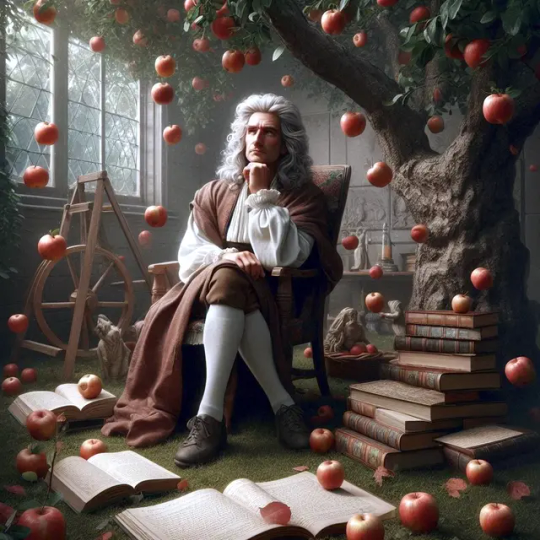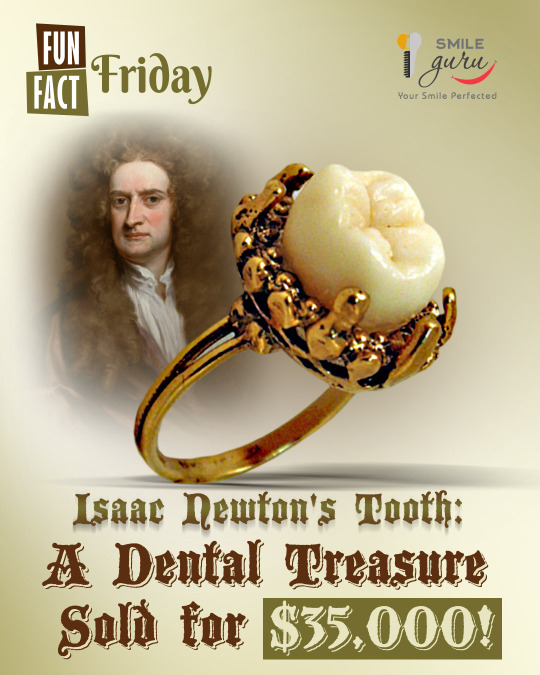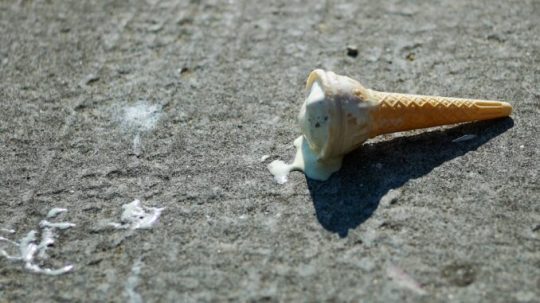#IsaacNewton
Explore tagged Tumblr posts
Text
Il tempo e lo spazio di Isaac Newton

La filosofia di Isaac Newton, vita e pensiero del padre della fisica moderna. Il 4 gennaio 1643 nasceva Isaac Newton, uno dei più grandi scienziati di tutti i tempi: nei suoi scritti, però, oltre a teorie che sono i capisaldi della fisica classica, troviamo anche molte riflessioni di natura filosofica e metodologica. C’è una filosofia nelle opere di Isaac Newton? In questo articolo cerchiamo di rispondere a questa domanda, senza trascurare i principali eventi della vita dello scienziato ancora oggi considerato il padre della fisica classica. Non considereremo, quindi, le grandi scoperte scientifiche di Isaac Newton: la legge di gravitazione universale, i tre principi della dinamica, la natura corpuscolare della luce o la scoperta del calcolo infinitesimale per le quali, ancora oggi, Newton è ricordato e studiato. La domanda dalla quale siamo partiti non è peregrina perché nel pensiero di Newton, come in quello di molti altri grandi scienziati, si nascondono interessanti considerazioni sulla metodologia della scienza, si ritrovano principi del ragionamento già utilizzati da altri filosofi ed emergono riflessioni di natura cosmologica o teologica che nulla hanno da invidiare a quelle svolte, negli stessi anni, da personaggi come Galilei, Pascal o Cartesio. In occasione dell’anniversario della sua nascita, avvenuta il 4 gennaio 1643, scopriamo, allora, la vita di Isaac Newton e le posizioni filosofiche presenti nelle sue opere. La vita e le opere di Isaac Newton Dopo un’adolescenza tormentata Isaac Newton (25 dicembre 1642 – 20 marzo 1727, secondo il calendario giuliano allora in uso in Inghilterra o 4 gennaio 1643 – 31 marzo 1727, secondo il calendario gregoriano), grazie a un’eredità del patrigno, poté pagarsi gli studi superiori e frequentare il Trinity College di Cambridge del quale fu prima allievo e poi docente, per lunghi e proficui anni. Rientrato a Woolsthorpe per scampare alla peste, tra il 1675 e il 1677, grazie a una mela caduta da un albero, iniziò a formulare il primo abbozzo della teoria della gravitazione. Molte altre furono le scoperte e le invenzioni di questi anni giovanili – il metodo delle flussioni col quale si avvicinò al calcolo infinitesimale, una teoria dei colori che era una premessa alla natura corpuscolare della luce, il telescopio riflettore – che gli procurano vasta notorietà e suscitarono subito altrettante polemiche. Il confronto con altri celebri scienziati del tempo come Robert Hooke e Edmund Halley, in particolare sulle leggi di Keplero, lo spinse a pubblicare, nel 1687, il suo capolavoro Philosophiae naturalis principia matematica (Principi matematici della filosofia della natura), una delle opere più celebri e influenti della storia della scienza nella quale la Rivoluzione Scientifica raggiunge i suoi esiti definitivi. Negli anni seguenti fu membro del Parlamento (1689-1690 e, poi, nel 1701), fu colpito da un esaurimento nervoso, conquistò una notorietà sempre crescente, divenne direttore della Zecca britannica e si trasferì a Londra, presiedette la Royal Society (1703-1726) e fu omaggiato col titolo di Sir (baronetto) dalla Regina Anna (1705). Ombroso e paranoico, oltre che naturalmente litigioso, Newton venne sepolto nell’Abbazia di Westminster, ricevendo un funerale degno di un re, secondo quanto testimoniato da Voltaire, che molto si impegnò nella diffusione del pensiero newtoniano in Francia e nel resto d’Europa.

Sir Isaac Newton. Mezzotint by T. O. Barlow, 1868; CC BY 4.0, Tra le altre sue opere è opportuno ricordare almeno: - la Nuova teoria intorno alla luce e ai colori (1672); - l’Ottica (1704). La filosofia di Newton: il metodo scientifico Dal punto di vista filosofico il testo sicuramente più interessante di Newton è il terzo libro dei Principia, dal titolo De mundi sistemate (Sul sistema mondo) e lo Scholium generale, aggiunto nel 1713, in occasione della seconda edizione dell’opera. Qui Newton elenca quattro regole metodologiche che indicano il modo corretto e l’atteggiamento da tenere nell’attività scientifica: - Non bisogna ammettere più cause delle cose naturali di quelle che siano vere e sufficienti a spiegare le loro apparenze. È un principio di economia che richiama da vicino il rasoio di Ockham, nella scienza a nulla serve complicare le spiegazioni, servono teorie semplici perché la natura stessa ama la semplicità, non impiega mai cause superflue e non fa nulla invano. - Agli stessi effetti dobbiamo, per quanto possibile, assegnare le stesse cause. Questa regola, strettamente correlata alla precedente, sottintende l’uniformità della natura, sulla terra e nell’intero universo, quindi, valgono le stesse leggi e i movimenti dei gravi sono regolati dagli stessi principi; - Le qualità dei corpi, che non ammettono né aumento né diminuzione, e che appartengono a tutti i corpi considerati nei nostri esperimenti, devono essere ritenute qualità universali di tutti i corpi. Dopo aver affermato la semplicità e l’uniformità della natura, Newton afferma che tutti i corpi godono di alcune caratteristiche fondamentali – l’estensione, la durezza, l’impenetrabilità, il movimento – che noi cogliamo attraverso i sensi, opportunamente potenziati dalla strumentazione scientifica. Quando Newton illustra questa terza regola ci accorgiamo che sta difendendo l’atomismo, la posizione ontologica affermata per la prima volta da Democrito, in base alla quale le unità elementari (gli atomi) che compongono i corpi sono indivisibili. Newton, inoltre, afferma qui l’efficacia dell’induzione: noi affermiamo l’indivisibilità delle particelle ma se anche un unico esperimento disconfermasse questa ipotesi, allora saremmo costretti ad ammettere che tutte le particelle possono essere divise ed effettivamente separate all’infinito. Non solo, il procedimento induttivo, che parte dall’osservazione dei particolari per giungere a conclusioni universalmente valide, è l’unica procedura valida per fondare le leggi scientifiche: se anche non disponessimo di esperimenti (come nel caso dei corpi celesti), le nostre osservazioni sono sufficienti per affermare che alcune qualità sono essenziali ai corpi, questo vale per l’attrazione reciproca, determinata dalla legge di gravitazione universale ma anche per l’inerzia che Newton definisce anche vis insita, una forza interna, essenziale, appunto, per pensare compiutamente i corpi. - Nella filosofia naturale le proposizioni ottenute per induzione generale dai fenomeni debbono essere considerate come strettamente vere o come vicinissime alla verità, nonostante le ipotesi contrarie che possono essere immaginate, fino a quando non si verifichino fenomeni dai quali o esse sono rese più esatte oppure vengono assoggettate a eccezioni. Qui Newton non fa che ribadire la sua preferenza per l’induzione, pur consapevole che si può incappare in ipotesi contrarie che contraddicono l’ipotesi iniziale. Il Dio di Newton, lo spazio e il tempo Per Newton il sistema mondo, ossia l’universo, è una grande macchina: l’impresa scientifica e il metodo induttivo consentono di cogliere le leggi che regolano il funzionamento di questa macchina ma questo sistema trova la sua origine solo nel progetto di Essere intelligente e infinitamente potente. È proprio l’ordine dell’universo a rivelare che dietro ad esso c’è il progetto di un Dio ingegnere, o architetto, e a rivelare, quindi, l’esistenza stessa di questo Dio. Troviamo qui un recupero di quella prova teleologica dell’esistenza di Dio che, già presente in Aristotele, era stata compiutamente formulata da Tommaso. Questo Dio, che oltre determinare le leggi della natura, imprime alla realtà una velocità iniziale, dopo la creazione non interviene più nelle vicende umane, non va concepito antropomorficamente, di lui si può dire che è sommamente perfetto, onnipotente e onnisciente, eterno e infinito. A ciò si lega la particolare concezione del tempo e dello spazio di Newton: egli crede che lo spazio e il tempo, in cui si produce il moto, siano assoluti, ovvero: “per loro natura senza relazione ad alcunché di esterno” Newton considera lo spazio una sorta di grande contenitore in cui i corpi si muovono, un contenitore “oggettivo”, che esisterebbe anche qualora non esistessero i corpi, e in cui gli eventi si susseguono in un tempo altrettanto oggettivo e assoluto (il tempo della fisica) che nulla a che vedere con concetti come l’ora, i minuti e i giorni. A questo proposito Newton afferma anche che lo spazio (e il tempo) è sensorium dei, ovvero l’elemento attraverso il quale Dio riesce ad essere compresente all’ordine naturale, al creato stesso, pur non intervenendo continuamente su di esso. “Hyphoteses non fingo���: che significa? In filosofia Newton viene spesso ricordato per aver pronunciato la celebre frase “hyphoteses non fingo” Anche in questo caso si tratta di un principio di natura metodologica: come già aveva creduto Galileo, nel suo lavoro lo scienziato deve interrogarsi su come avvengano i fenomeni naturali, deve dunque chiarire le cause efficienti di un fenomeno, ed esplicitare le leggi fisiche che regolano quel fenomeno. Tali leggi sono valide sulla base dell’osservazione e dell’esperimento (per questo si parla anche di filosofia sperimentale) e lo scienziato “non inventa ipotesi” (è questo il significato letterale della frase), non avanza ipotesi sugli scopi, sulle cause finali che hanno portato Dio a regolare il mondo in questo modo, a stabilire determinate leggi fisiche e non, piuttosto, altre. È, dunque, una chiara delimitazione del campo della scienza, dove le speculazioni metafisiche non trovano cittadinanza. Read the full article
0 notes
Photo

Isaac Newton reminds us that progress is built on the wisdom of others. 🚀✨ Let's honor the giants who paved the way for innovation and discovery!
1 note
·
View note
Photo

Live your life as an exclamation rather than an explanation. https://www.quotenova.net/authors/isaac-newton/x72nve
0 notes
Text

"To me there has never been a higher source of earthly honor or distinction than that connected with advances in science"
- Isaac Newton
#quotes#qotd#quoteoftheday#sciencehonorsadvancesinscience#isaacnewton#earthlydistinction#highersource
0 notes
Text

Newtons Naturalis Principia Mathematica. Customize this t-shirt color and style with laTostadora online shop: https://www.latostadora.com/web/newtons_principia/2874658?s=H_A8
0 notes
Text
#IsaacNewton#Physics#Mathematics#LawsOfMotion#UniversalGravitation#Optics#HistoryOfScience#ScientificRevolution#ModernScience#InfluentialScientists#GroundbreakingDiscoveries#NewtonianPhysics#ScienceGenius#ScientificLegacy
0 notes
Text
Apple
Así fue el primer logotipo de Apple codiseñado por Steve Jobs.
Mostraba a Isaac Newton sentado bajo un árbol, con una manzana a punto de golpearle la cabeza.

0 notes
Photo

Isaac Newton's Tooth: A Dental Treasure Sold for $35,000!
😂 Hold on to your toothbrushes! Did you hear that one of Sir Isaac Newton's teeth was sold in 1816 for a whopping $35,000 in today's cash lingo? That's some serious dental bling from the genius behind gravity! Imagine the conversations that tooth could share!
#funfactfriday#funfacts#funfactory#isaacnewton#toothfairy#dental#treasure#teeth#tooth#toothbrush#dentistry#drsenthil#smileguru#cathedralcity#california
1 note
·
View note
Photo

Isaac Newton's Tooth: A Dental Treasure Sold for $35,000!
😂 Hold on to your toothbrushes! Did you hear that one of Sir Isaac Newton's teeth was sold in 1816 for a whopping $35,000 in today's cash lingo? That's some serious dental bling from the genius behind gravity! Imagine the conversations that tooth could share!
#funfactfriday#funfacts#funfactory#isaacnewton#toothfairy#dental#treasure#teeth#tooth#toothbrush#dentalcare#dentistry#drsenthil#implantsguru#ranchomirage#california
0 notes
Link
0 notes
Text
Alla ricerca di una antigravità relativamente quantistica

La strana storia dell’antigravità. Come la fissazione di un milionario per contrastare la forza che ci tiene a terra procurò finanziamenti a ricerche scientifiche più ampie e trascurate. Nei primi anni Sessanta diverse università statunitensi, tra cui la Emory University ad Atlanta, in Georgia, e la University of Tampa, in Florida, ricevettero cospicui finanziamenti e un monumento da un istituto di New Boston, nel New Hampshire: la Gravity Research Foundation. Su alcuni dei monumenti, lastre in pietra piantate all’esterno degli edifici, c’è ancora questa iscrizione: «È per ricordare agli studenti le benedizioni che arriveranno quando verrà scoperto un semi-isolante per sfruttare la gravità come potenza libera e ridurre gli incidenti aerei». Tra i moltissimi filantropi e finanziatori privati della ricerca scientifica statunitense nel Novecento il fondatore della Gravity Research Foundation, l’imprenditore Roger Babson, è ricordato come uno dei personaggi più bizzarri ed eccentrici. La sua storia è principalmente nota per la sua ossessione per l’antigravità, e cioè per la ricerca di un sistema che permettesse agli oggetti di essere liberi dalla forza di gravità, da lui considerata responsabile della morte di milioni di persone ogni anno in incidenti aerei e di altro tipo. La generosità di Babson è anche considerata un esempio storico significativo di interesse privato verso un’area della ricerca scientifica molto trascurata tra gli anni Quaranta e Sessanta. Come scritto dagli storici David Kaiser e Dean Rickles, mecenati come Babson e come l’imprenditore Agnew Bahnson non solo finanziarono la ricerca sulla gravità e sulla relatività generale in un momento in cui questo ambito riceveva scarso sostegno istituzionale, ma contribuirono concretamente a formare una comunità di ricerca.

Dopo la fine della Seconda guerra mondiale, che già aveva provocato in Europa la chiusura di molti centri di ricerca sulla gravità, la ricerca di base finanziata con fondi pubblici negli Stati Uniti fu in larga parte guidata dagli interessi nazionali nella Guerra fredda e nella corsa verso lo Spazio. Si concentrò in particolare sulla fisica nucleare e sulla meccanica quantistica, a scapito di altre aree fondamentali della fisica: alla fine degli anni Quaranta nessuno dei principali dipartimenti di fisica delle università statunitensi includeva un corso sulla relatività generale. A partire dalla metà degli anni Sessanta un periodo di ripresa degli studi sulla gravità in Europa e negli Stati Uniti, definito da Kaiser e Rickles «rinascimento della relatività», coinvolse giovani ricercatori come Stephen Hawking e Roger Penrose (vincitore del Nobel per la fisica nel 2020), e portò a integrazioni fondamentali della teoria formulata decenni prima da Albert Einstein. Finanziamenti privati come quelli di Babson avevano contribuito intanto ad accrescere negli Stati Uniti un interesse per la ricerca sulla gravità in un momento in cui quell’interesse era minimo, sebbene Babson fosse interessato soprattutto a scoprire l’antigravità. Con “antigravità” si fa di solito riferimento a un fenomeno ipotetico che permetta a un oggetto di essere libero dalla forza di gravità senza doverne esercitare una contraria. Non è cioè considerata antigravitazionale l’assenza di peso sperimentata dagli astronauti nello Spazio, per esempio, né il bilanciamento della forza di gravità tramite qualche altra forza, come quella diretta verso l’alto che l’aria esercita sulle ali e sulla fusoliera di un aereo in volo (la portanza). Considerando che secondo la relatività generale la gravità è un effetto della curvatura spazio-tempo determinata dalla presenza di corpi dotati di massa, l’antigravità è considerata un fenomeno impossibile, se non in circostanze artificiose, ed è un concetto presente soprattutto nella fantascienza. Nel romanzo del 1901 I primi uomini sulla Luna, scritto da Herbert George Wells, lo scienziato Cavor scopre la formula per ottenere una sostanza, la “cavorite”, in grado di schermare la gravità (la stessa sostanza è peraltro presente anche nella serie a fumetti di Alan Moore La Lega degli Straordinari Gentlemen). Una sostanza con effetti simili, l’“inertron”, è presente nel racconto del 1928 Armageddon 2419 AD, scritto da Philip Francis Nowlan, l’autore di fantascienza statunitense che inventò il personaggio Buck Rogers, protagonista di popolari fumetti e serie televisive. Grazie all’inertron i personaggi del racconto sviluppano una sofisticata tecnologia aerea basata su una specie di levitazione. Dopo essersi laureato in ingegneria al Massachusetts Institute of Technology, Babson lavorò per qualche anno in una società di investimento e fondò nel 1904 un’azienda di analisi dei titoli finanziari e gestione degli investimenti che esiste ancora oggi (la Babson-United). Dopo essersi fatto una reputazione come analista per aver previsto il crollo del mercato azionario del 1929, scrisse decine di libri di consigli sugli investimenti e saggi su problemi economici e sociali. Il suo interesse laterale per la fisica e per la forza di gravità si concretizzò negli anni Quaranta, per ragioni in parte biografiche. Babson riteneva la forza di gravità responsabile della morte di sua sorella Edith e di un suo nipote, che erano entrambi annegati in due diversi incidenti. Lo raccontò in un saggio pubblicato nel 1948, intitolato Gravity – Our Enemy No. 1, in cui descrisse una sorta di rancore personale. Scrisse che sua sorella annegò in un lago, «incapace di combattere la Gravità, che salì, l’afferrò come un drago e la trascinò sul fondo». L’anno successivo attinse ai capitali messi da parte per fondare la Gravity Research Foundation, con l’idea di assegnare premi annuali in denaro per studi e ricerche in grado di migliorare la comprensione della forza di gravità.

Il monumento della Gravity Research Foundation al Gordon College a Wenham, in Massachusetts (Elizabeth B. Thomsen/Wikimedia) Come raccontato da Kaiser e Rickles, il principale obiettivo di Babson era scoprire un qualche «isolante parziale, riflettore o assorbitore di gravità», o una qualche lega «i cui atomi possano essere agitati o riorganizzati dalla tensione gravitazionale per eliminare calore» o «la cui temperatura possa essere influenzata dalle onde gravitazionali». Spinto da questa ambizione, immaginò macchine a movimento perpetuo e altri sistemi assurdi per invertire o quantomeno ridurre la forza di gravità. Considerando la gravità responsabile anche di molti malanni fisici, brevettò una medicina da lui soprannominata «pillola della gravità», che avrebbe teoricamente dovuto alleviare i dolori alle gambe. Il suo impegno nella ricerca dell’antigravità era così noto che, secondo un articolo uscito su Time nel 1950, una grande azienda di scarpe gli offrì 100mila dollari – oggi più o meno equivalenti a un milione – per avere «qualcosa che potesse essere inserito nella suola delle scarpe per isolare la gravità», e diversi produttori di tappeti lo avvicinavano per cercare di avere informazioni su come sviluppare tappeti volanti. Nei pressi della Gravity Research Foundation Babson fondò anche un museo ornitologico con circa 5mila specie, il Thomas Edison Bird Museum. Gli diede il nome dell’imprenditore e suo amico Thomas Edison, che una volta gli aveva suggerito che gli uccelli erano come macchine volanti perché le loro ali probabilmente contenevano una sorta di assorbitore gravitazionale. L’obiettivo di Babson – che morì nel 1967, a 91 anni – non fu mai raggiunto, e lo scrittore e divulgatore scientifico Martin Gardner paragonò i suoi sforzi a pseudoscienze come la parapsicologia e la rabdomanzia. Tuttavia i finanziamenti dell’istituto favorirono una ripresa significativa degli studi sulla relatività. Tra gli anni Sessanta e Settanta, prima di pubblicare le sue ricerche più famose, Hawking vinse per sei volte il premio annuale di mille dollari assegnato dalla Gravity Research Foundation. Altri noti vincitori, oltre a lui e a Penrose, furono il fisico Freeman Dyson, il fisico Bryce DeWitt e l’astronomo Martin Rees. «Ciò che era iniziato come uno sforzo eccentrico diventò mainstream», scrisse nel 2014 il New York Times, citando la storia dell’istituto. Già alla fine degli anni Cinquanta la Gravity Research Foundation si era ormai fatta una reputazione di istituto rispettabile, mettendo da parte l’idea di controllare la gravità per concentrarsi sugli sforzi per studiarla e comprenderla. Alla prima conferenza annuale nel 1951 i partecipanti erano stati ventidue: nel 1958 furono 280. L’interesse per l’antigravità fu portato avanti dall’altro magnate citato da Kaiser e Rickles, più giovane di Babson: Bahnson, un membro del consiglio di amministrazione della fondazione, che aveva fatto fortuna nella produzione di macchine tessili. Collaborando con DeWitt e la moglie Cécile DeWitt-Morette, due dei più importanti fisici teorici della storia moderna, Bahnson fondò nel 1956 l’Institute of Field Physics alla University of North Carolina, Chapel Hill. Per gran parte della vita raccolse finanziamenti per conto dell’istituto, che intanto aveva ormai chiarito di non essere impegnato nella ricerca sull’antigravità. Lui continuò a manifestare quel suo interesse soltanto attraverso la fantascienza: nel suo libro del 1959 The Stars Are Too High raccontò la storia di tre uomini che si fingono alieni per mostrare al mondo un disco volante libero dalla forza di gravità da loro costruito, con l’obiettivo di allentare le tensioni politiche internazionali. Morì nel 1964, a 48 anni: in un incidente aereo. Le iscrizioni su alcuni dei monumenti che ancora oggi in diverse università statunitensi ricordano i finanziamenti ricevuti dalla Gravity Research Foundation non citano più «semi-isolanti antigravitazionali» e sforzi per ridurre gli incidenti aerei. Contengono tuttavia ancora un vago riferimento all’antigravità: «Serve a ricordare agli studenti le benedizioni che arriveranno quando la scienza determinerà cos’è la gravità, come funziona e come può essere controllata». La lastra che si trova al Colby College a Waterville, nel Maine, viene a volte rovesciata dagli studenti per scherzo, come segno ironico della forza di gravità. L’area in cui si trova quella della Tufts University a Medford, in Massachusetts, è invece utilizzata come luogo di una breve cerimonia informale. Gli studenti che ricevono il dottorato in cosmologia si inginocchiano mentre il relatore lascia cadere una mela sulla loro testa, per ricordare il racconto secondo cui Isaac Newton ebbe l’ispirazione per la legge di gravitazione universale quando una mela gli cadde in testa mentre si trovava nel giardino della sua tenuta a Colsterworth, in Inghilterra. Read the full article
#antigravità#fisica#forzadigravita#GravityResearchFoundation#IsaacNewton#relativitàgeneral#relativitàgenerale#spazio-tempo#StephenHawking#ThomasEdison
0 notes
Text

"If I have seen further than others, it is by standing upon the shoulders of giants"
- Isaac Newton
#quotes#qotd#quoteoftheday#standingongiants#isaacnewton#seeingfurther#inspirationalquote#wisdomfromgiants
0 notes
Photo

Isaac Newton
Isaac Newton (1642-1727) fue un matemático y físico inglés considerado la figura más importante de la Revolución científica por sus tres leyes de movimiento y la ley universal de la gravedad. Las leyes de Newton se convirtieron en una base fundamental de la física, mientras que su descubrimiento de que la luz blanca está formada por un arcoiris de colores revolucionó el campo de la óptica.
Sigue leyendo...
0 notes
Photo

Isaac Newton
Isaac Newton (1642-1727) était un mathématicien et physicien anglais largement considéré comme la figure la plus importante de la révolution scientifique pour ses trois lois du mouvement et sa loi universelle de la gravité. Les lois de Newton sont devenues une base fondamentale de la physique, et il a révolutionné le domaine de l'optique en découvrant que la lumière blanche est composée d'un arc-en-ciel de couleurs.
Lire la suite...
0 notes